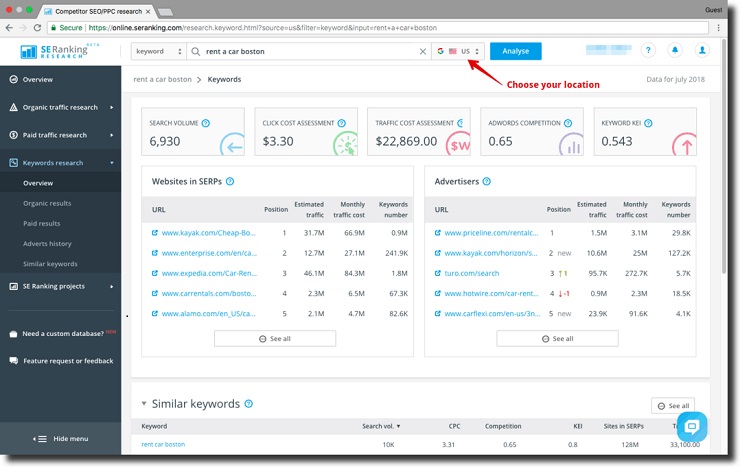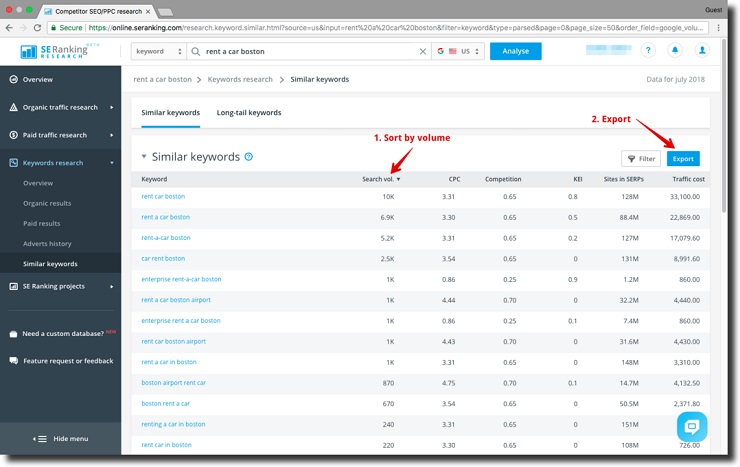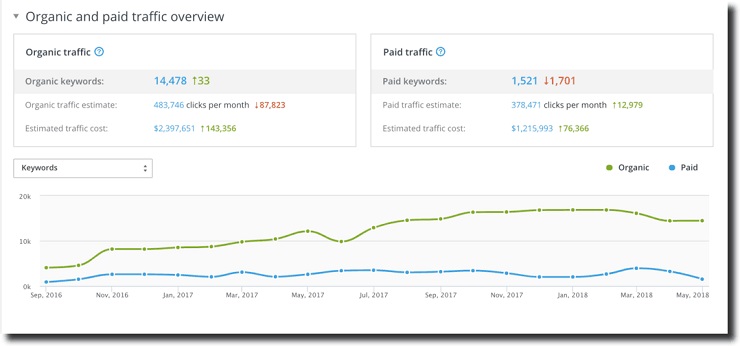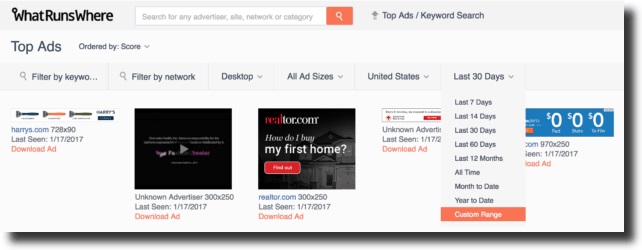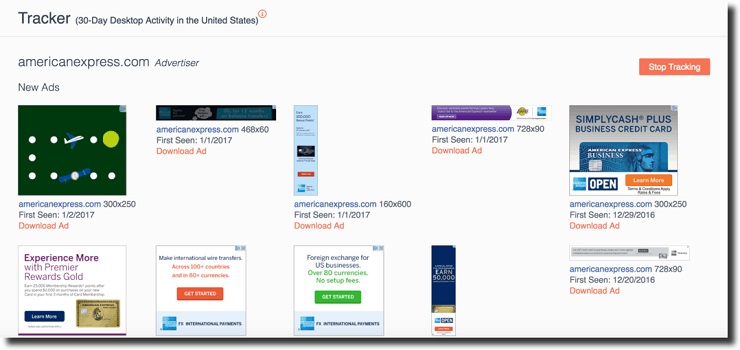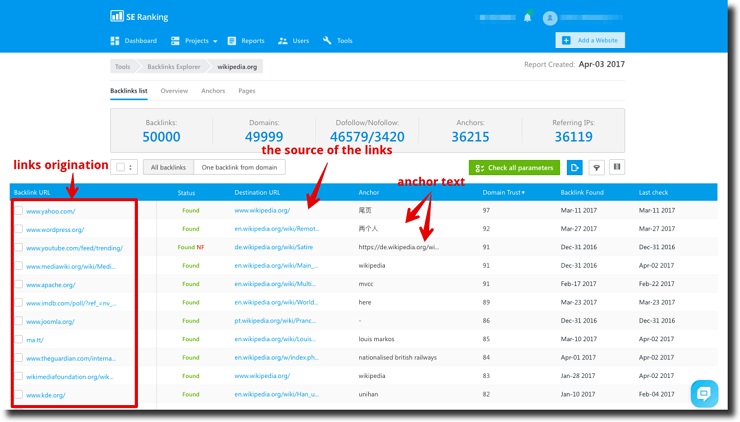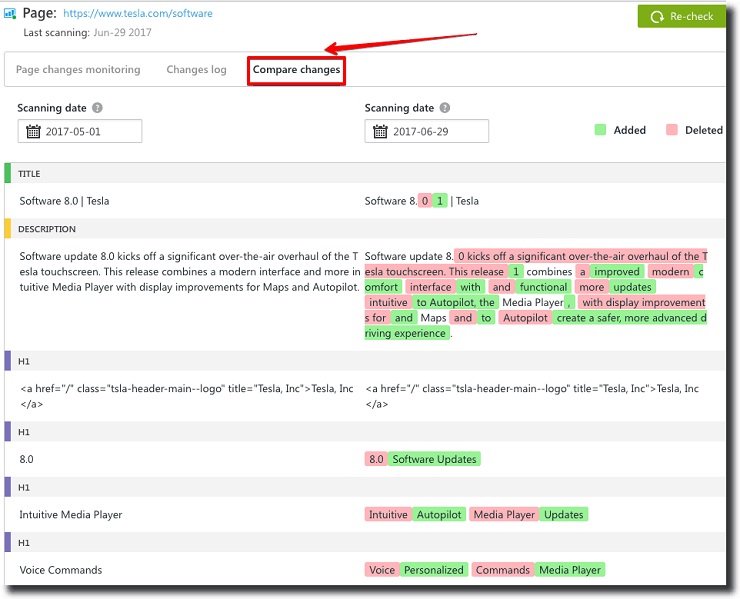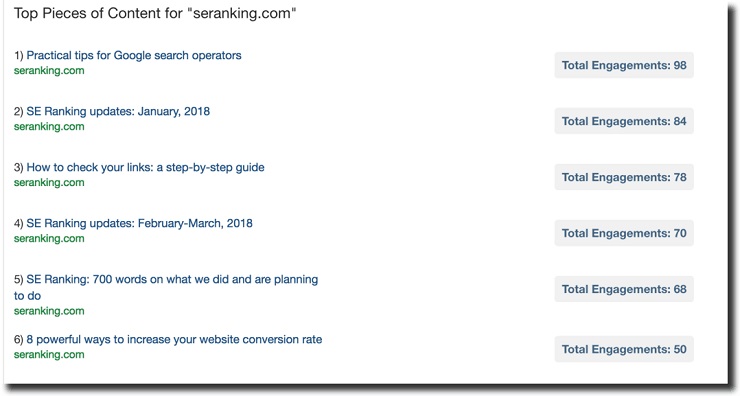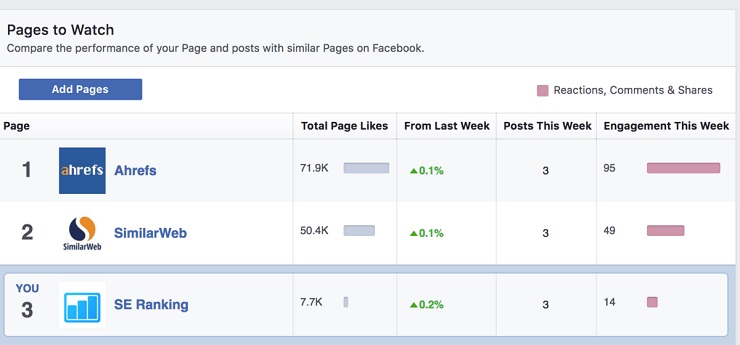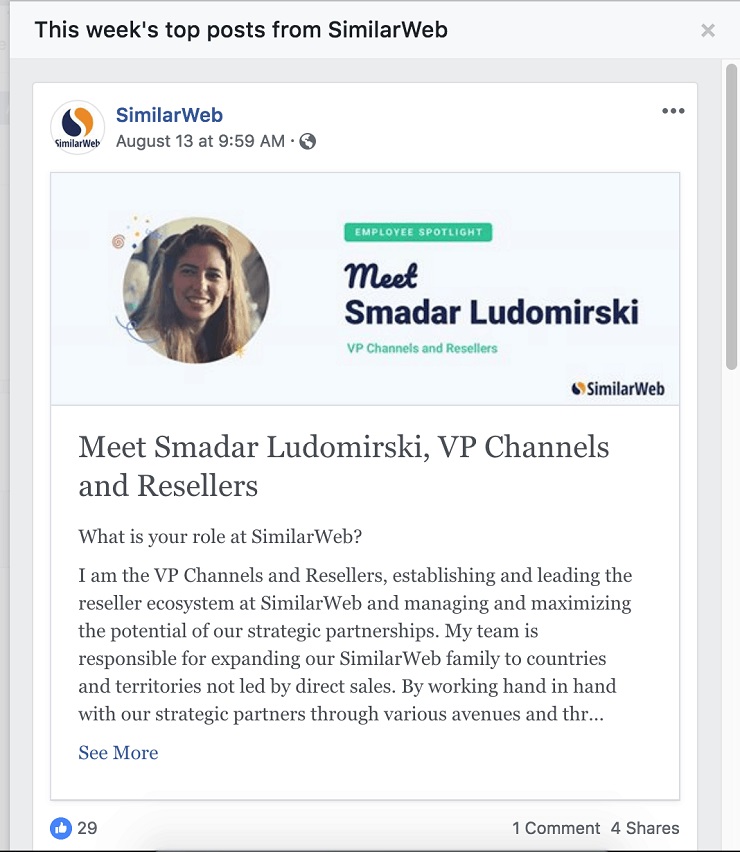There is a saying that smart people learn from their mistakes and wise people learn from the mistakes of others. This is applicable to anything.
Take, for instance, marketing. Researching the marketing strategies of your competitors is an effective way to evaluate their own strengths and weaknesses, and by extension, improving your own strategy. By paying close attention to your competition, you can learn from their success and avoid making the same mistakes they have.
Keep in mind, we’re not talking about ripping anybody off. Savvy learning and modeling are not the same thing as copying—nobody likes a thief! But marketing builds on lessons from other brands’ efforts, and the more you understand what your competitors are doing, the better you’ll be at shaping your own unique vision and strategy.
Let’s dive deeper and explore how to conduct research to learn how your competitors are implementing marketing strategies, and how you can use this knowledge to inspire and inform your own strategy.
Learn How Your Competitors Acquire Paid Traffic
Paid or organic, traffic is the bloodstream of your business. However, traffic acquisition strategy mistakes are costly in so many ways. Especially when you’re running paid campaigns. Weak copy in an ad with no relevant keywords or message might eat up a lot of money with no positive ROI.
Google Ads are pretty expensive. The text and banners have to appeal to the target audience as precisely as possible, otherwise you’re wasting money. Investigating the history of your competitors’ ads and how long they were running will give you an idea of which text/banner worked the best. The longer it ran, the better the chance the ad was successful. It can be a source of inspiration as well as a sort of guideline on what kind of content you should use in your own ad campaigns.
How do you do this? Do some competitive research.
Learning from Competitors’ Paid Campaigns:
Here is an overview of what you need to do to gather data on your competitors’ paid ad campaigns, and learn from their successes and mistakes. We’ll talk about each one in detail below, using an example.
- Define your main competitors;
- Come up with a “golden” set of keywords that all major players in your niche are using;
- Review the copy that your competitors are using or were using in the past, but then terminated—the history of the ads will provide you with this information;
- Inform your own budget based on how much money your competitors are approximately spending on their paid campaigns.
Let’s dig into each of these steps in more detail:
Step 1: Define Your Main Competitors
This should be pretty easy to figure out. For our example, let’s say you have an online car rental tool and your competitor would be a well-known comparable brand, like Kayak.
Step 2: Come Up With a ‘Golden’ Set of Keywords
Using SE Ranking’s Competitor SEO/PPC research tool (SEMRush is another option), choose the tool “keyword research” and specify your main keyword. If you are a local business, choose something like “rent a car Boston” in order to get a set of suggestions for your region and niche.
You can first manually add the keywords you are targeting (like “car rental” “Boston car rent” etc. Ideally those are the ones that are closely related to what you do as a business. If you are an established business with some online presence you can add the keywords that you are ranking the best for. And then pick from the suggestions that SE Ranking offers. The tool will give you a list of similar queries—choose 50 with the highest search volume—this will be a base for core keywords as well for the competitor research.
Next, go to the section “Competitors” and choose all competitors. Then select those that have the best visibility (in our case it’s kayak.com) and start analyzing the keywords they are using to acquire paid and organic traffic. Below you can see what keywords the main competitor in this niche is using and the estimated cost for the click and traffic acquisition.
The estimate gives you an understanding of what kind of budget you would need for your ads if you wanted them to be displayed within the top three positions.
Note: If your business is not brand new, you probably already have some search engine rankings as well some presence on the web (backlinks). Check the keywords that you are already ranking for and find out their positions. You may need to put just a little extra effort in optimizing your content for these specific keywords, which would push you up to the first positions in Google’s SERP.
Step 3: Check Out Your Competitors’ Copy
For ideas on ad copy, use WhatRunsWhere. This tool is the most accurate and easiest to use out there. It might be a bit more expensive than some other tools, but is a very quick and easy way to see how your competitors are advertising.
All you need to do is enter the domain you want to research and all the information pops up, including charts for traffic resources, in a concise and easy to understand format.
You can see which ad is performing the best and bringing in the most qualified traffic. Based on this information, you can adjust your own strategies, specifically the targeting, bidding, and copy.
As an alternative, you can search your competitors manually and see how their ads look on the web, but that is much more time consuming.
Additionally, we need to define whether you are targeting only local competitors or local and global ones, if you have a global presence. Google pays close attention to local optimization, giving priority to match for the local search. The local business optimized for a local search will have better rankings for a specific query than a bigger and well-known player of a global scale. So if you are a local business, pay attention to those “local” stars that you need to compete with.
Click Here To Get Free Instant Access To 28 Proven Marketing Strategies For New Startups!
Review the Sites Linking to Your Competitors
Next you want to evaluate your competitors’ backlink profiles. Backlinks are hyperlinks from other sites that point to the pages of your site. The quality and the quantity of the backlinks influence your rankings in search engine results. The main concept here lies in understanding that the more reputable resources are citing your products or services, the more Google trusts you.
Analyzing others’ backlinks will give you an understanding of what sites are influential in your niche and will help you move higher up in search engine results. Essentially, you are researching which sites you also want to gain a backlink from.
There are special tools to check the backlinks for any site you want, including your competitors. I’ll use SE Ranking’s platform again to illustrate how to do this. Other good tools that you can use are SEMrush and AhRefs. Look for Backlink Explorer or something similar.
When evaluating backlinks, check their Alexa rating, DA (Domain Authority), and other parameters that indicate how authoritative they are. Then, weed out the low-quality links and take note of the high-quality ones.
Domain Authority
Domain Authority (DA) is a score determined by SEO company Moz, with the highest score being 100. Backlinks are the major basis for this calculation, with the quality of inbound links shaping the score. In order to improve a website’s DA, you need to link to the websites with the higher DA score.
If the majority of the links from the profile you are evaluating are in the range between 70-80, you can disqualify or discard those with a score around 10-30. Usually the sites with DA between 0-20 are new or otherwise have a low authority in the niche.
Alexa Rating
Alexa rating is also important, as it shows what position your website holds overall. Keep in mind that the smaller the number the better (i.e., Google is ranked number 1 globally and in the US). Therefore, the better the Alexa ranking of the resource you are linking to, the more value it provides to your backlink profile and overall SEO. Although “better” ranking could be anywhere in the range from 1 to 10,000.
Below is an example of what the report looks like in SE Ranking. While checking your competitors’ backlink profiles, check both the source of the links and the anchor text. This confirms the relevance and helps search engines add value to the link.
Pay attention to where the backlinks originated, how powerful the domain is, and how relevant the link is for your niche.
“Anchor text” can show you which keywords a competitor is promoting the most or what keywords are used as a link for the site. Usually the most sought after keyword will be present in the anchor and if the keyword matches your targeted one, that means the link is really valuable for you.
Action Plan
Once you’ve got a list of backlinks that your competitors already have, it’s time to go through them one by one. A good approach here is to divide the list into four groups and evaluate them using the following parameters:
- Domain age and authority in the niche
- DA score
- Alexa score
- Anchor in the link
Then set an action plan for each one:
- Check off good backlinks that are often useful in rankings, and are also easy to get. Those are: Google Maps, Yelp, different trusted catalogs, company pages on CrunchBase, and so forth.
- Try to connect with sites that are not that easy to get a backlink from, but are valuable for you and that you absolutely need to have a presence on. For every niche, the list of those resources will differ, but getting a mention there could instantly yield results. For example, searchenginejournal.com is a very valuable resource for SEO technologies vendors, so having a link from this resource is extremely important for them.
- Make a list of great sites that are extremely hard to get mentioned on, and make a smart plan on how to get there. Let’s say for the marketing technology vendors, for example, the appearance in Search Engine Journal or publications like that is very important. They might leverage sponsored and/or organic options to get a presence on these sites.
- Finally, pick up some easy-to-grab opportunities. Don’t neglect the backlinks that aren’t top-notch, so to speak. They might not be as reputable as Forbes, but they are relevant, and you can develop good ongoing relations with them. Although the results are not going to be visible immediately, consistent work in that direction will eventually gain some fairly good results. Those could be small publications in your niche, guest posts on your partners’ blogs, or product reviews from some of your most loyal customers. Or it could be a listing in the free directory that encourages link exchange.
Research What the Competition is Cooking in Real Time
The struggle to create truly compelling content on landing pages, blog posts, and your entire site is so real. It hurts. The time, the effort, the resources needed to develop, test, and adjust are tremendous.
All of it can be done in a more intelligent way. Specifically, you can research changes that your competitors are implementing to their sites, from the wording on their landing pages to the pricing changes and the topics of their blog posts. Use this as inspiration for your own content and pricing strategies.
There are a few ways to do this research. The first and the most obvious way is to manually check added or removed content on competitors’ sites, but that’s time consuming. Living in this century is a beautiful thing, as there is technology for pretty much everything. Try Page Changes Monitoring from SE Ranking—this instrument monitors changes on any page that you set it to, including your competitors.
Let’s say the competition is rolling out a new feature and sets up two landing pages to see which resonates better. While your competitor is doing A/B testing and investing in analyzing what landing page or pricing model drives the biggest conversions, you can track the changes and evaluate the results.
At some point, you can compare the historical data and see clearly what page or model works the best, and use this competitive research as a basis for your activities. Below is a report that you get while using Page Changes Monitoring that shows you what’s been added and removed from a particular page.
Basically, all you need to do is add the pages you want to monitor and the tool will collect the reports you are seeing on the screen above. If you detect that several variations of copy were altered over time and the final one remained on the page for a while, you can safely assume that’s the content that worked best for your competitor.
Click Here To Get Free Instant Access To 28 Proven Marketing Strategies For New Startups!
Analyze Engagement with Competitors’ Content
Another tip for performing competitive research is collecting valuable stats on their content. For example, generating ideas for your blog is a tedious task and sometimes it’s hard to predict what will resonate. Evaluating stats, such as the number of clicks a certain post gets, might give you ideas of what topics could produce better engagement with your readers.
There are a few tools to use, but I really like Buzzsumo. Using their Content Analysis tool, you can evaluate any domain in terms of how well the content on this particular domain is performing.
When using Buzzsumo, just enter the URL in a search box and explore the engagement with content over time. The report will show you the number of articles published over a specific period (the titles of the articles are very important to analyze here) as well as which articles have the highest engagement score.
Keep Tabs on Competitors’ Social Media
Finally comes social media, which should not be overlooked. It’s a good idea to keep an eye on the kind of content your competitors are sharing via social media. This can spark your own creativity and tell you what is working and not working for your audience. You and your competitors are most likely targeting the same group of people with shared interests. If they are responding well to your competitors’ social media strategy, they might respond well to something with similar elements (but better and more creative) from your side.
A few suggestions of what you might want to pay attention to when evaluating the performance of your competitors’ updates on social media:
- Do they include a call to action (CTA) in their posting? What are they?
- Are they sharing only their content or content from other publications?
- Are they using live video updates, contests, or polls?
- How people are reacting to their updates? Are there any comments? What kind of comments? How do they reply to them?
Among the tools to research your competitors’ social media updates is Facebook’s own Pages Watcher, where you can add your competitors’ Facebook pages to your watch list and watch “likes” and engagements over a period of time.
You can find Facebook Page Watcher in your Page Insights panel. To start your research, add the pages of competitors you want to monitor. You have to add at least five pages.
Once added, you’ll see a top level overview of engagement, but the most useful part is the detailed view of the top posts from this page for the week. For example, we clicked on “Similar Web” and it shows the top-performing post and the level of engagement it produced: 29 likes, a comment, and four shares.
Furthermore, in the “Top Posts from Pages You Watch” feature, you’ll see the stats for the top five posts for the week posted by the pages you watch. Click on the text of the post to get a clear picture of its engagement. This way you can get an idea of which content is working for their fan base and which one is not, and avoid developing and sharing content that most likely would not resonate with your target audience as well.
Click Here To Get Free Instant Access To 28 Proven Marketing Strategies For New Startups!
To Conclude
There is a great book that I recommend, called Steal Like an Artist: 10 Things Nobody Told You About Being Creative, by Austin Kleon. In this book, you’ll find many tips on how and why it’s important to use all kinds of knowledge to generate your own brilliant ideas, and why it’s really not about what information you are deriving from others, but how you are using it. Conducting competitive research is a great way to find a starting point for your next big plan.
I’m curious what kinds of tactics you use to research your competitors and how you are using it to inspire your own strategies. Share them in the comments below or reach out to me directly!

